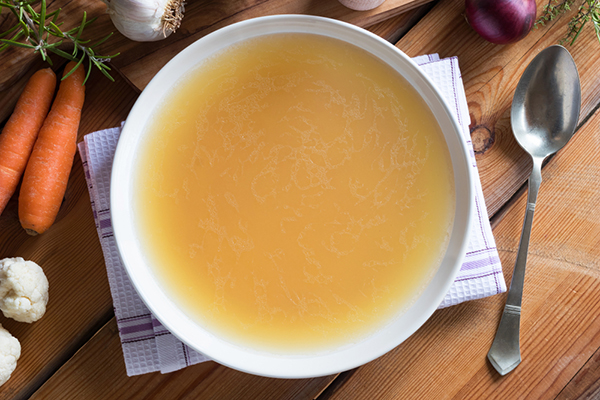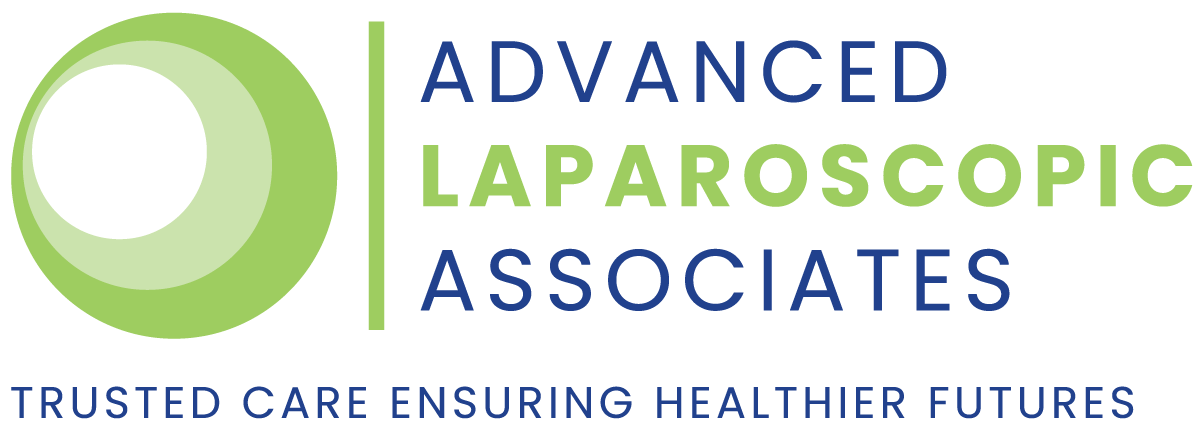Guide to Eating After LAP-BAND Surgery

What is LAP-BAND Surgery?
In laparoscopic gastric banding, a belt-like device (band) is surgically placed around the upper part of the stomach. A balloon is attached around the inside of the band, which can be inflated by injecting saline fluid through a small port located under the skin. When this balloon inflates, the gastric band tightens, creating a narrow passage between the small pouch of the upper stomach and the lower stomach.
This band restriction maintains a feeling of fullness and limits the amount of food that is able to pass through to the lower stomach. The stomach pouch can only hold one to two ounces of food at a time.
The band must be adjusted frequently as your weight loss progresses. These adjustments are performed in your doctor’s office. By adjusting the band, you can achieve a slow and steady weight loss of one to two pounds per week. Most patients achieve the maximum weight loss around two to three years after surgery. Gastric band surgery is both adjustable and reversible.
How to Eat After LAP-BAND Surgery
The goal of your LAP-BAND diet after your bariatric surgery is to help you recover quickly and kick-start your weight loss. Knowing what to eat also helps avoid stretching out your new stomach pouch.
Your new LAP-BAND surgery diet will progress through three phases. Each phase lasts one week:
- 1st week: Phase 1 clear liquid diet
- 2nd week: Phase 2 soft/mushy diet
- 3rd week: Phase 3 soft solid (mechanical soft) diet
Phase 1
Aim to drink 24 ounces of clear fluids the first day after surgery. Try slowly sipping 1 ounce (30 milliliters) every hour and stop when you feel full. On day two, aim for 48 ounces, and 64 ounces on day three and thereafter. For the first week after your surgery, you will be restricted to a liquid diet. You may drink water, low-sodium clear broths (beef, vegetable or chicken), caffeine-free tea and sugar-free gelatin, sugar-free popsicles.
Diet tips:
- Carry a large water bottle with you wherever you go.
- Drink the things that you enjoy the most.
- Mix it up by adding ice to your beverage and blending it to make a slushie.
Phase 2
During week two, you may add in protein-rich beverages and vitamins your body needs for healing. Your stomach will still be tender and swollen on the inside, and your stitches will still be healing.
Add in small amounts of soft, mushy foods, such as protein shakes, low-fat milk, and fat-free yogurt, nonfat Greek yogurt, half a cup of pudding and sugar-free fudgesicles.
Diet tips
- Take sips to avoid dehydration.
- Remember 64 ounces a day is a goal and you should not worry if you cannot meet it yet. Your body is still healing. Just aim for that goal each day until you are able to meet it.
Phase 3
During week three, your stomach is still healing, so foods have to be blended or pureed in order to not stretch your stitches or injure your new stomach pouch. Examples of acceptable pureed and soft solid foods include low-sugar, low-fat items like pureed fruits and vegetables, beans, smooth applesauce, eggs and canned tuna (you can make tuna, chicken or egg salad), oatmeal, low-fat and small curd cottage cheese and smoothies.
At this stage, you should eat high-protein foods first and refrain from drinking liquids while you eat. Liquids expand the stomach pouch and there won’t be enough room for the pureed food.
Diet tips
- Keeping a food journal will help you stay on track. Your doctor will give you your daily intake goals for calories, fat, protein, carbohydrates, fiber and added sugar.
- Stop drinking liquids at least 30 minutes before eating and refrain from drinking again until 30 minutes after eating so your meal can digest first.
- You may feel no restriction in your stomach or a lot of restriction – remember that everyone heals at different speeds and this is okay.
Eating For Long-Term Health and Weight Loss Success
After you’ve progressed through the first three phases, slowly introduce soft new foods. You no longer have to blend your food, but they should be soft and easy to tolerate, such as bland foods. Your doctor will let you know when you no longer have any texture restrictions.
Remember that bariatric surgery is the tool to help you lose weight, but you still need to participate in your weight loss by watching your calorie intake and exercising at least 30 minutes a day.
Diet tips
- Chew solid foods 20 to 30 times before swallowing.
- Pay attention to the feeling of fullness and stop eating.
- Avoid drinking fluids 30 minutes before or after a meal.
- Protein should be part of each meal and eaten first. Protein is important to:
- Assist in the healing process
- Maintain muscle mass
- Prevent hair loss
- Provide energy
- Help you continue to feel full
Have a plan in place for parties, holiday eating, and other situations where you will encounter food challenges.
Your Partner in Care: Post-Surgery
Advanced Laparoscopic Associates postsurgical program is designed with your comfort and care in mind. From the specialized beds and furniture to the expert team of anesthesiologists and nurses, you’ll be welcomed by friendly faces and devoted care.
Our comprehensive aftercare program includes a nurse, dietitian and fitness advisor working with you to provide support and expert advice you need to change your behaviors and relationship with food by creating an individual aftercare plan specific to you.
The Nutrition Store
Having surgery is stressful enough. You can aid your healing and eliminate the stress of figuring out what to eat and when by using Advanced Laparoscopic Associates’ Nutrition Store. You can shop for your food by category or by phases. Best of all, you don’t have to worry about whether you are getting the proper nutrition.
Our line of nutritionally healthy meal replacements, protein supplements, snacks and vitamins give you what you need for long-term weight loss success. Our nutrition store provides the products you need to help you reach your goals.
At ALA, we’ve dedicated our careers to combating the obesity epidemic and helping our patients achieve lasting weight loss and lifelong health. Contact us today to attend a free seminar or make an appointment with one of our surgeons. We’re here to help you along your weight loss journey.

